The Inconvenient Truth about H-1B Visas
Americans are told that mass immigration will bring the world’s geniuses to our country. The numbers tell a different story.
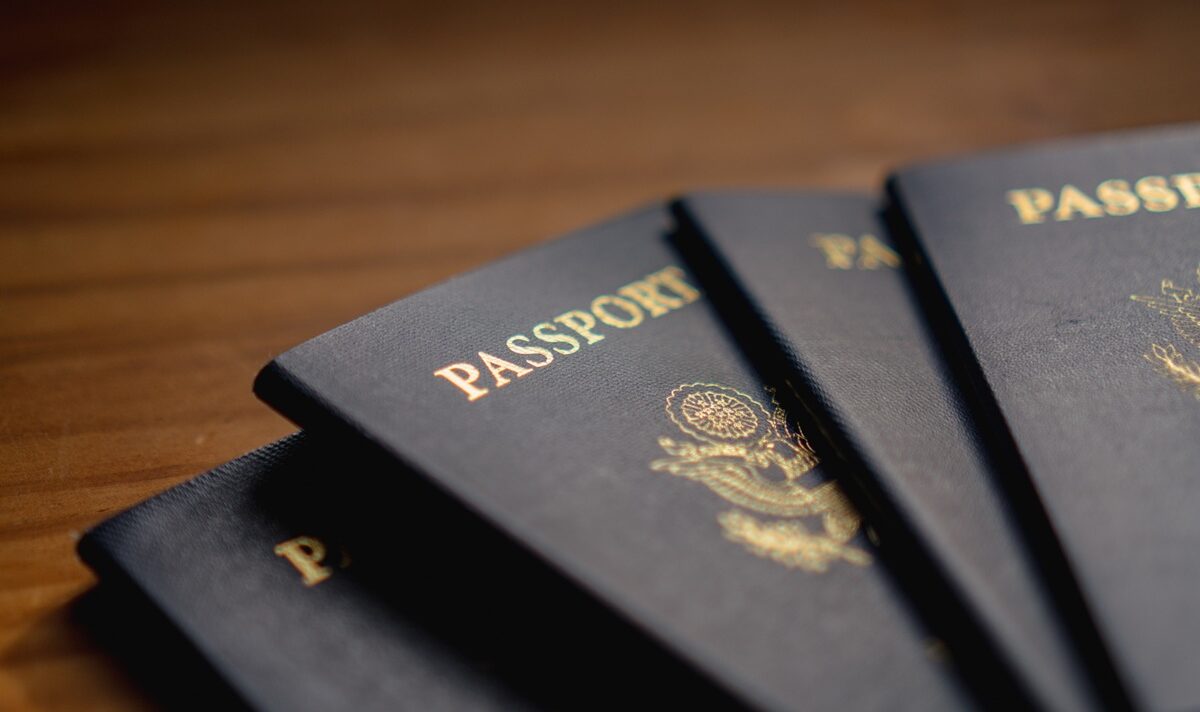
President Donald Trump’s mandate from the voters undoubtedly gives him wide latitude to close the border to illegal aliens, which he has done. Border crossings are down 90 percent and more illegal aliens were arrested in Trump’s first 50 days than across Joe Biden’s final year in office.
Now, many in the America First movement are asking, “What about reducing legal immigration?”
Big Tech moguls Elon Musk and Vivek Ramaswamy accidentally raised awareness of this controversial topic in December by defending—while also calling for reforms to—the H-1B visa program, which allows companies to hire specialist workers from abroad for up to 6 years. “The reason I’m in America along with so many critical people who built SpaceX, Tesla and hundreds of other companies that made America strong is because of H-1B,” Musk noted on X.
Ramaswamy said the “badly broken” program “should be replaced with one that focuses on selecting the very best of the best.” Yet he’s also blamed American culture for “venerat[ing] mediocrity over excellence,” justifying the foreign worker program. “A culture that celebrates the prom queen over the math olympiad champ, or the jock over the valedictorian, will not produce the best engineers,” Ramaswamy declared, so “top tech companies often hire foreign-born & first-generation engineers over ‘native’ Americans.”
The resulting debates were colorful and worth reading, and they revealed a powerful, widespread desire to reduce America’s influx of legal immigrants, and not just among America Firsters.
A Rasmussen poll published days after the Musk-Vivek ruckus found that 60 percent of likely voters believe America does not need more H-1B workers since the country “already has enough talented people to train and recruit.” That includes nearly three-quarters of Republicans, two-thirds of swing voters, and almost half of Democrats. At least one California Democrat in Congress has criticized the H-1B system for rampant fraud and abuse.
Trump, for his part, denied a larger share of H-1B applications in his first term (18 percent) than either Obama (11 percent) or Biden (just three percent). Yet he recently praised the program, saying he was “a believer in H-1B” who had used it many times in his business properties. That doesn’t mean Trump 2.0 won’t scale down the program, though. In March, Secretary of State Marco Rubio ruled that visa policies now fall under his purview as “foreign affairs,” allowing him broad discretion to revise visa rules without the drawn-out public notice/comment process.
But what are the facts around America’s immigration system, and what role do H-1B visas play in it?
Reframing the Debate
The H-1B program is capped annually at 85,000 three-year visas, which can be renewed for another three-year term. Estimates put the total number of H-1B workers in the nation at 500,000–600,000 people.
At the same time, H-1B holders may apply for lawful permanent residency, allowing them to live and work here indefinitely. The process isn’t automatic, but a significant portion—perhaps as high as 90 percent—of H-1B-holders ultimately receive green cards, according to Homeland Security “adjustment of status” statistics. (No one knows the actual figure, apparently.)
While the debate that Musk and Ramaswamy kicked off centers on temporary foreign workers, the real debate on the Right should focus on the vastly larger mass-immigration pipeline permitted by our expansive “family reunification” policies.
There are roughly 13 million green card holders in the United States, dwarfing the number holding H-1B visas, about half a million. We’ve admitted more than 1 million more each year since 1990 on average, even during the bleak COVID years of 2020–21. That includes an indeterminate number of H-1B workers.
A permanent resident may apply for U.S. citizenship after five years, or three if they marry a U.S. citizen. Between 2021 and 2024, 2.6 million permanent residents became naturalized U.S. citizens, 98 percent of them through the green card process.
Once naturalized, however, new citizens may invite in their spouses, married or unmarried children, and even adult siblings—and at 675,000 people per year, the annual immigration cap for family reunification is far larger than any temporary worker program.
This is the mass immigration pipeline that a growing number of Trump voters wish to dramatically scale down, if not pause outright and indefinitely as past generations did after periods of intensive migration.
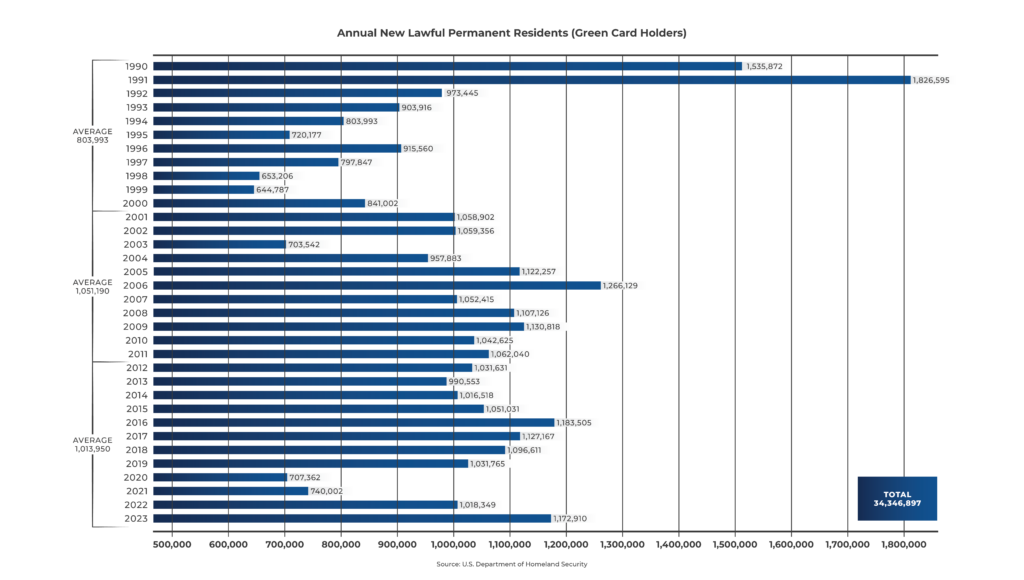
A Half Century of Mass Immigration
We’ve been in such a period since the 1965 Immigration and Nationality Act. Since then, the percentage of foreign-born residents has skyrocketed, reaching an all-time high of 15.6 percent, or 51 million people, today. The mass immigration that the statute enabled has created serious political consequences for the republic.
Naturalized citizens made up a record-breaking 1 in 10 voters in the 2024 election and voted at higher rates than native-born Americans. Forty-four percent self-identified as Democrats, compared with just 30 percent who called themselves Republicans. This has been true for decades, which is why leftist get-out-the-vote groups have spent a fortune courting immigrants as part of the Democratic Party’s “New American Majority” program.
Astonishingly, this aspect of our troubled immigration system has been largely forgotten, yet it’s arguably the part that should concern MAGA voters most, given the movement’s interest in putting American jobs, education, health, and well-being first. Perhaps far less attention should be paid to the people immigrating on temporary worker visas and more on this massive immigration pipeline of low-skilled workers under the family reunification policy.
That doesn’t excuse the glaring problems with the H-1B program, of course. Its proponents—such as Musk and Ramaswamy—often market the H-1B program as our nation’s only tool for attracting highly sought-after experts, particularly in the tech industry. But the facts tell a different story.
Importing Experts or the Huddled Masses?
The H-1B program is marketed as importing “highly skilled foreign workers” into the United States. But that’s stretching things… a lot. U.S. Citizenship and Immigration Services (USCIS) lists the requirements to apply: Attainment of a bachelor’s degree and a sponsorship by a U.S. employer for a job requiring “highly specialized knowledge.”
“Highly specialized knowledge” encompasses everything from a general neurology physician earning $380,000 per year down to an accountant paid $22 an hour, according to job listings on Indeed.com. Most of the positions offered to H-1B applicants are in Big Tech, but many are not. And the “nots” include entry-level mortgage assistants, e-commerce account executives, lathe machinists, bridge repair operators, college admissions consultants, AC/DC motor plant technicians, and life insurance call center specialists—jobs certainly fillable by native-born Americans.
Speaking of the native-born, in most cases there is no legal requirement for companies to prioritize hiring Americans before foreigners. Nor are companies prohibited from replacing American employees with (presumably cheaper) H-1B workers, so many do. In 2022 alone, U.S. companies hired 34,000 new H-1B employees while laying off tens of thousands of Americans. Among them was Elon Musk’s Tesla, which requested 2,000 new H-1B visas at the same time it was laying off 15,000 U.S. employees last April.
The number one H-1B employer is Amazon at 9,265 foreign hires, per the USCIS list of H-1B employers and their total visa employees. Number two is the Indian tech multinational Infosys. This foreign company may be based in Bangalore, yet it’s imported over 8,100 H-1B visa workers into the U.S.
Infosys has a checkered past: In 2013, the company paid $34 million in a settlement with federal authorities for illegally using B-1 visitor visas for work requiring H-1B visas. Infosys admitted no wrongdoing. In 2019, Infosys reached an $800,000 settlement with California for again funneling nearly 500 employees into the state on B-1 visas, instead of H-1B visas, avoiding paying payroll taxes or disability and unemployment insurance.
It’s a similar story with the third-biggest H-1B employer: Cognizant Technology Solutions, an Indian tech company that’s imported over 6,300 foreign workers into the U.S. In 2024, whistleblowers sued the company for discriminating against 2,000 American workers over imported Indian employees.
Not surprisingly, 73 percent of H-1B visa holders come from India and 12 percent from China, countries famous for their ethno-nationalism and highly restrictive immigration systems. Those nations rarely offer citizenship or even permanent residency to foreigners.
“I definitely knew it was because of me being an American, not being Indian, and also because I was black,” said one woman who was fired by Cognizant three days after suing the company. A jury agreed with her.
While U.S. law clearly protects H-1B workers from discrimination by employers, there’s far less scrutiny on employers discriminating against native-born workers in visa holders’ favor. Fortunately, the Trump administration has begun cracking down on the practice. But conservatives should ask, “Is it enough?”
Other H-1B employers are less shady but their actions will still make conservatives bristle. Hitachi Energy (visas: 45) is a Swiss renewable energy firm that prioritizes “sustainability” and a “commitment to human rights” on the march “towards carbon-neutral” power in line with “the UN’s Sustainable Development Goals” on global warming. Similarly, Schlumberger (visas: 97) is a French multinational oil producer “accelerating decarbonization” to “reduce emissions . . . on the journey to net zero.”
Again, these are foreign companies outsourcing American jobs to foreign workers… in America.
At least these positions are filled by only the best and brightest, bringing much-needed talent to bolster America’s economy. But across the country, many more jobs are filled by the luckiest, not the most talented.
Every year the H-1B program is flooded with 386,000 applications by individuals who meet its minimum standards. Of these, 65,000 are selected by lottery, while another 20,000 are picked at random from a pool of applicants with master’s degrees.
Wily companies game the system, using staffing agencies to hire thousands of foreign workers desperate to enter the United States and get a shot at permanent residency and U.S. citizenship, while big companies get lower-cost employees who can’t afford to leave.
Critics on the right and the left have blasted this system as a revival of indentured servitude. If visa holders lose their job, they have 60 days to find a new position—and a sponsor—or risk overstaying their visa. Consequently, “H-1B workers can’t complain too much” about lower wages, writes Peter Van Buren in The American Conservative. “Unable to change jobs freely . . . they have to take what they are given.”
Not only experts and analysts, but also everyday people, take issue with the H-1B system. On Reddit, a social media app popular among young people, several users have bluntly criticized the program. An example:
H1Bs are a way for firms to force job loyalty through indentured servitude (in spirit) and increase bottom lines by undercutting the acceptable salary range of the already existent American workforce. It’s not to fill roles that they can’t fill through American labor [due to] lack of availability, that’s just the Trojan horse.
Then there’s socialist Sen. Bernie Sanders (I-VT). “Elon Musk is wrong,“ he tweeted in January. “The main function of the H-1B visa program is not to hire “the best and the brightest,” but rather to replace good-paying American jobs with low-wage indentured servants from abroad. The cheaper the labor they hire, the more money the billionaires make.”
There are solutions to at least some of these problems. The Trump administration could raise the H-1B salary floor to stop foreign hires from undercutting Americans, prioritize the highest-paid positions to mitigate the lottery’s “crowding out” effect, and weight certain industries above others. None of these fixes require shutting down the visa program entirely, but they would go a long way toward addressing its problems.
But defenders of the system want to expand the H-1B cap, believing it the best way to discover the world’s next Einstein. Yet the U.S. actually has a separate visa specifically for “extraordinary” individuals: the EB-1 “Einstein” visa, which grants permanent residency to 40,000 of the most gifted Olympic athletes, researchers, surgeons, and Pulitzer Prize winners each year.
These are unquestionably the “high achievers” most Americans want to attract. Which raises the question, why invite so many middle-class, white-collar jobs through H-1B—particularly at a time of mass tech lay-offs?
Techpocalypse and the GOP
That’s the question bothering so many 20- and 30-something men, a demographic sprinting towards Trump and the new Republican Party in search of hope, opportunity, and dignity.
Recent tech industry lay-offs suggest H-1B visas, even if they worked as marketed, aren’t needed—or wanted—in the current economy, especially if they lead to layoffs for hard-working Americans. In late February alone, healthcare, cybersecurity, and computer part manufacturers cut 6,000 jobs. Hewlett-Packard announced restructuring plans affecting an additional 6,000 jobs.
That’s small fry compared with the 380,000 U.S. tech workers laid off between 2022 and 2024, led by Tesla, Intel, and Cisco. Partly this was the result of letting go of extra hands that had been hired during the COVID pandemic to meet ballooning consumer demand, which has since dropped off. Other firms fear a looming recession, so are cutting labor costs to preserve critical cash reserves. Experts expect more lay-offs to come in 2025.
A jobs shortage would argue against importing more middle-skill workers.
“There is no shortage of qualified STEM workers,” argues the Center for Immigration Studies, which supports H-1B reform. “The H-1B program has transformed over time from a means to supplement the American tech workforce to a means of cheaply replacing it. Americans who are replaced by H-1B guest workers are often forced to train their replacements or risk losing their severance.” At the same time, the center points out, “foreign STEM workers often come from sham universities abroad—particularly in India—and have far fewer specialized skills than they claim.”
The center records the stories of 11 different American tech workers unnecessarily replaced by “underqualified” foreign hires. “99 percent of people with H visas are totally underqualified. No skills. I worked with so many of them from Infosys. There are millions of Americans who could do this work,” one Seattle worker writes.
“If we said anything, they’d accuse us of being racist, using the company’s anti-discrimination policies,” laments another woman laid off from her insurance job.
By the Numbers
Immigration policy is almost always a numbers game, and a large segment—if not a majority—of the America First movement wants significantly fewer immigrations… or perhaps just few, period.
The discussion around H-1B policy both illuminates and obfuscates this. On the one hand, the resentment felt by Americans whose jobs have been outsourced in their very own country suggests the Right wants to go beyond deporting illegal aliens and tighten immigration altogether.
On the other hand, too much public discussion is hung up on the relatively modest number of H-1B workers, instead of the million low-skill immigrants who flood in legally each year simply because a family member happens to live here.
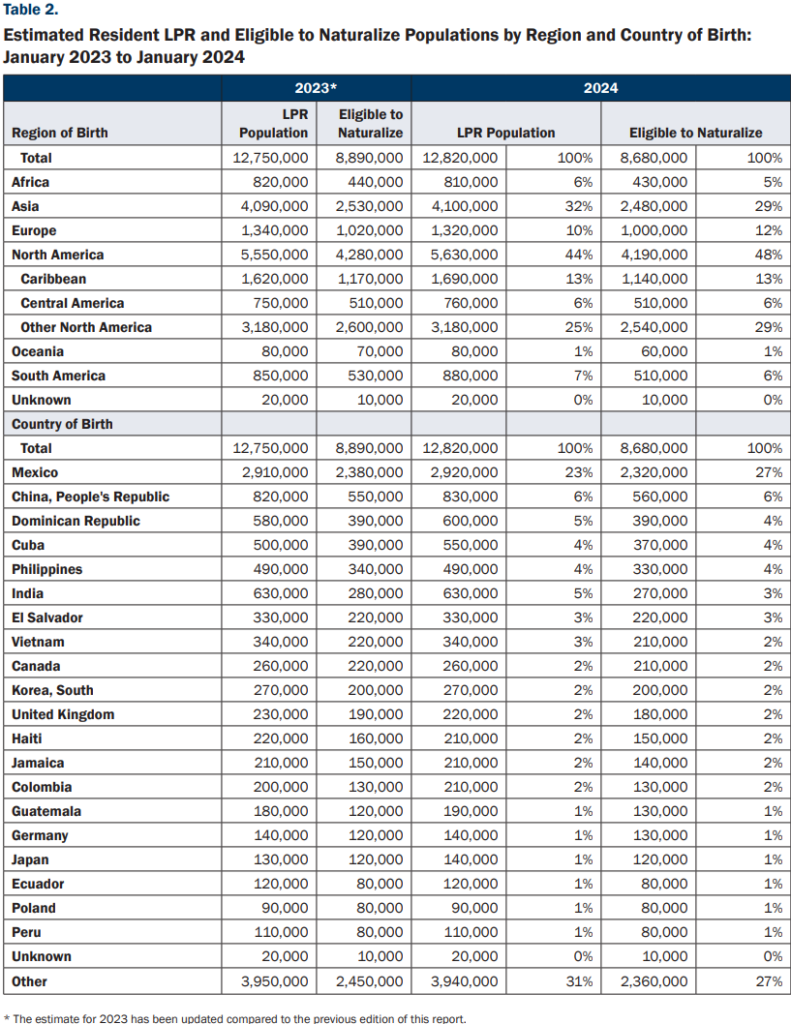 Credit: U.S. Citizenship & Immigration Services
Credit: U.S. Citizenship & Immigration Services Sixty percent of green card holders entered either as immediate relatives of a U.S. citizen or through “family-sponsored preferences.” These are decidedly not the world’s “best and brightest” doctors, engineers, or AI experts. Chinese and Indians combined comprise just 11 percent of the lawful permanent resident population, whereas Mexicans, Dominicans, Filipinos, and Cubans together make up 36 percent, with Mexicans as the plurality.
Nor are they vibrant, young workers with decades in the career force ahead of them: Just 20 percent of green card holders are 34 or younger, while 57 percent are age 35–64.
Even without U.S. citizenship, they’re entitled to Social Security benefits such as retirement and disability if they worked in the U.S. for at least ten years.
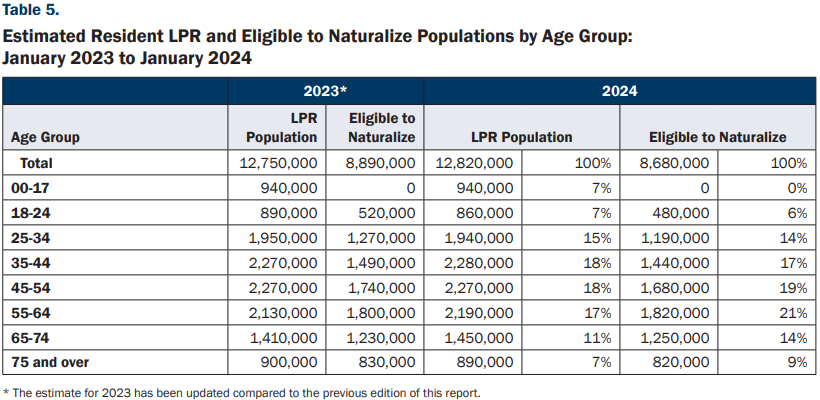 Credit: U.S. Citizenship & Immigration Services
Credit: U.S. Citizenship & Immigration Services This is the consequence not of prioritizing merit, as is often argued, but of the mass immigration system created by President Lyndon Johnson in 1965.
The H-1B fight is really over two different visions of America: Is it a special economic zone without borders or a concrete identity (America the idea), or are we a distinct people with a history, language, culture, and tradition (America the nation)?
For MAGA, the answer will make all the difference in the world.
The post The Inconvenient Truth about H-1B Visas appeared first on The American Conservative.
.png)
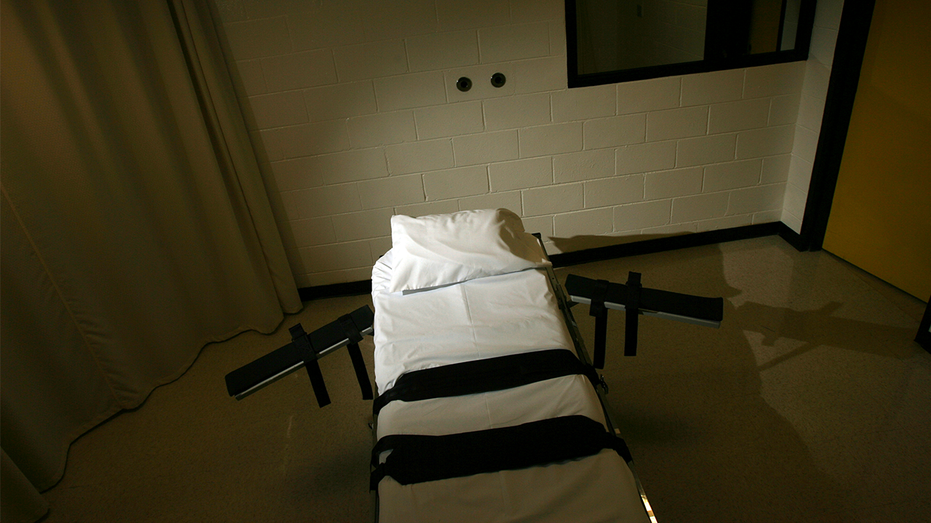
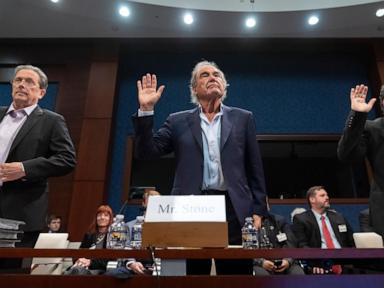
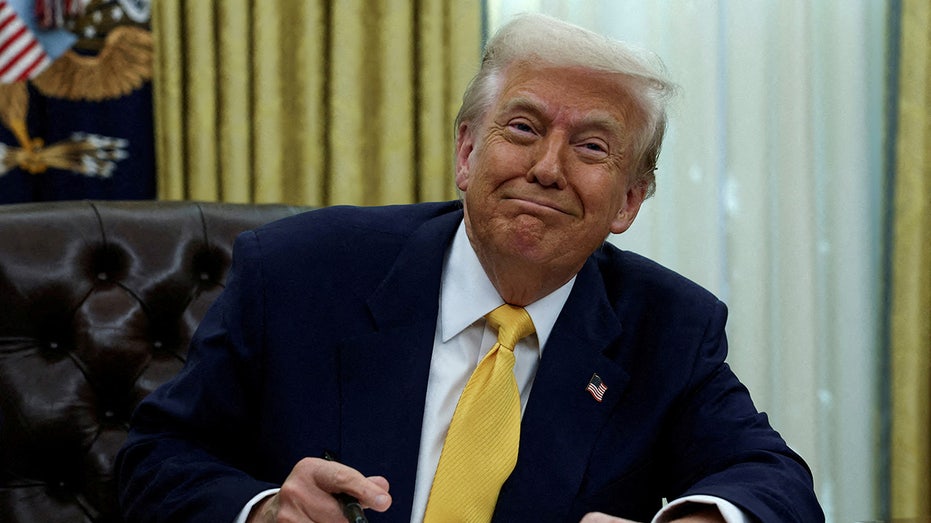

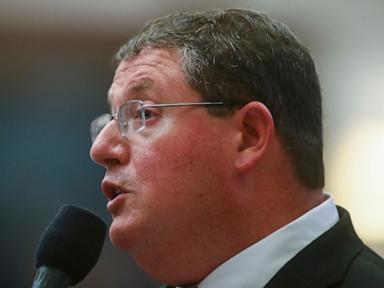

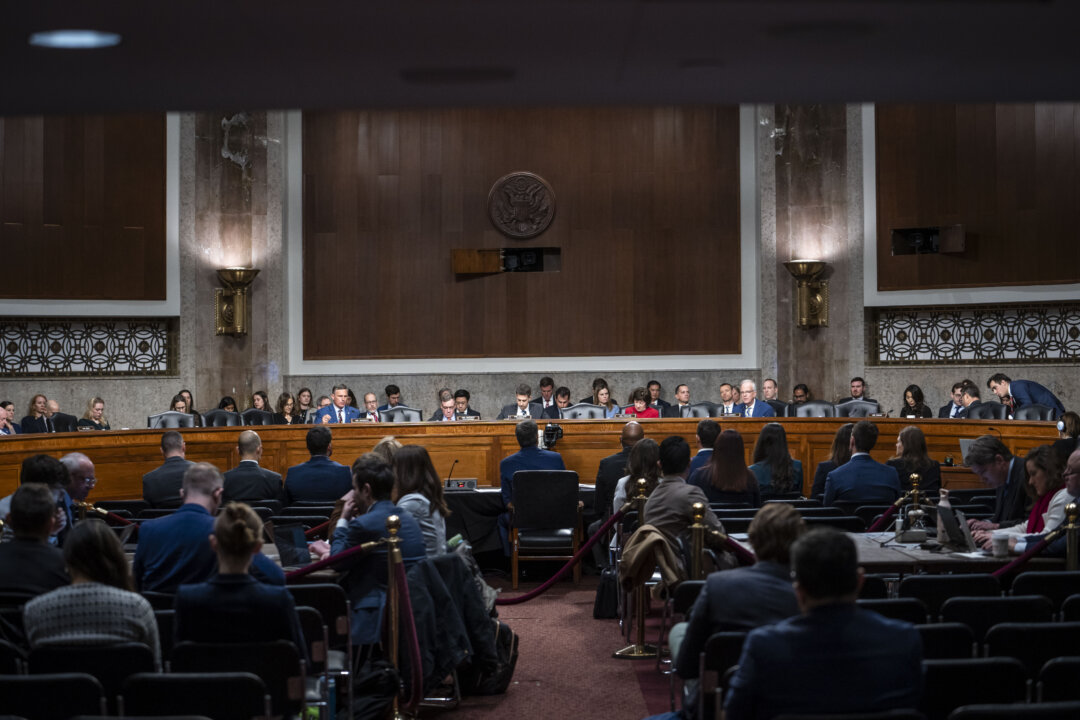


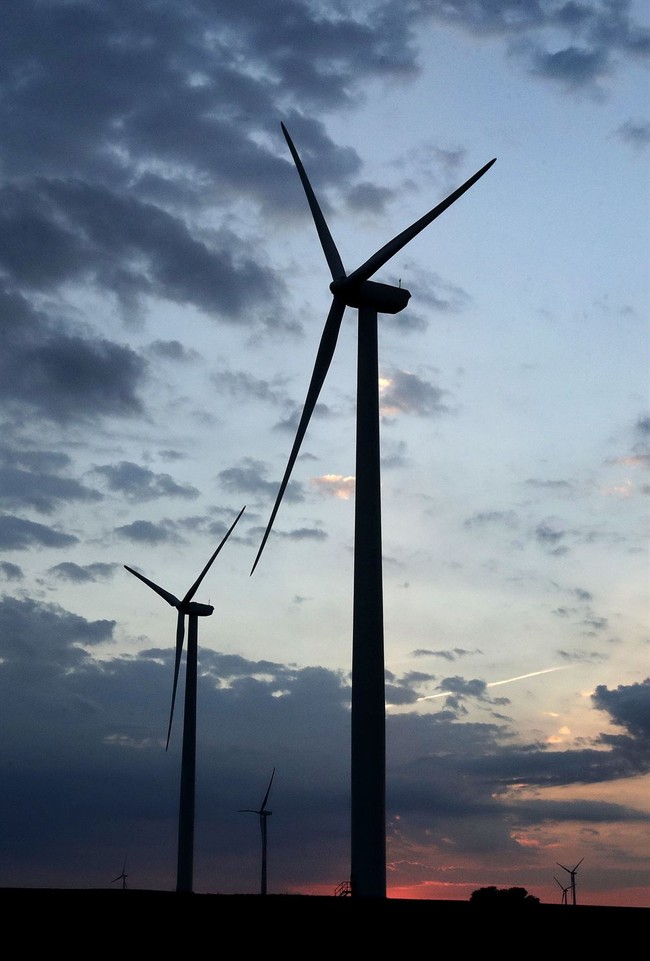
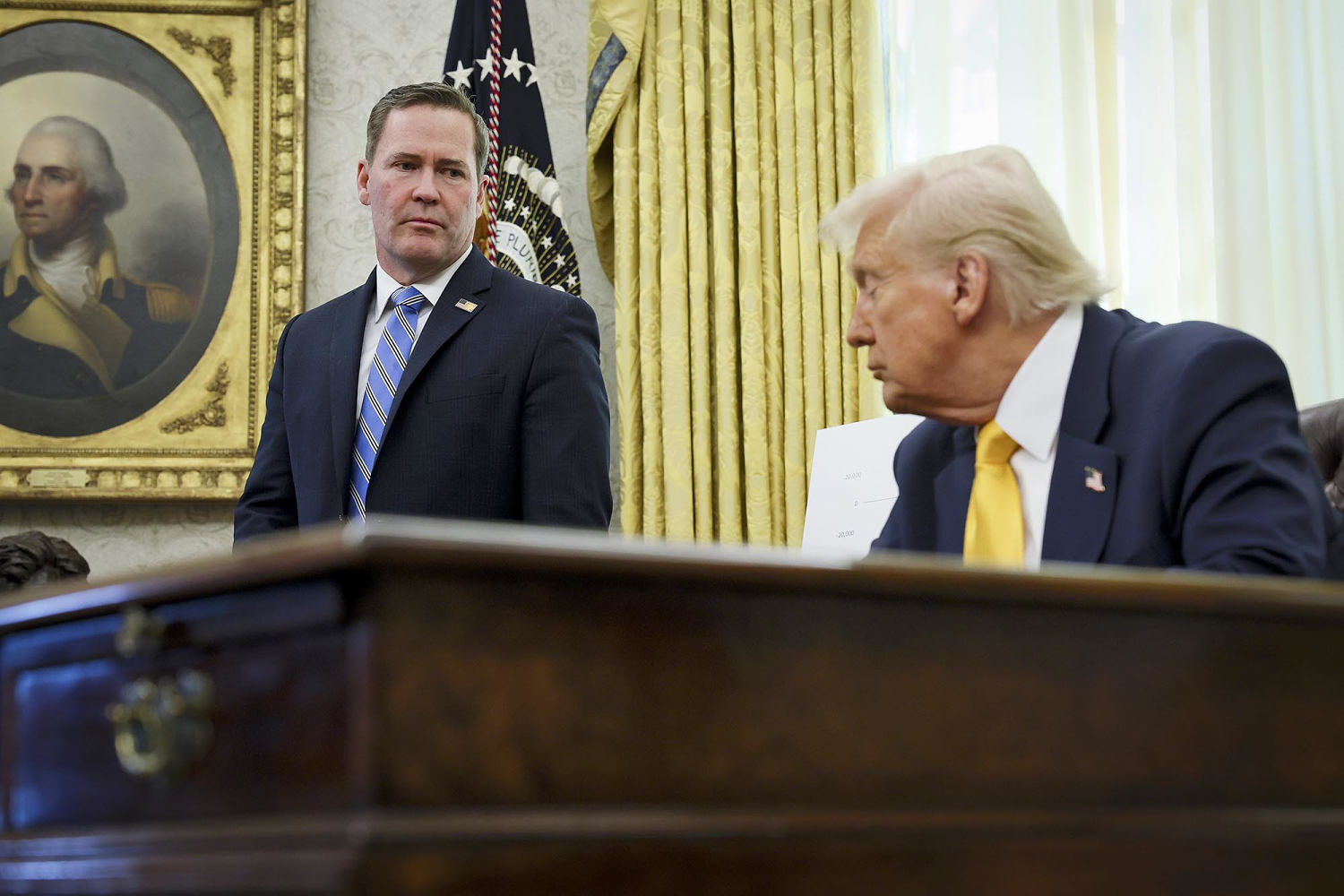
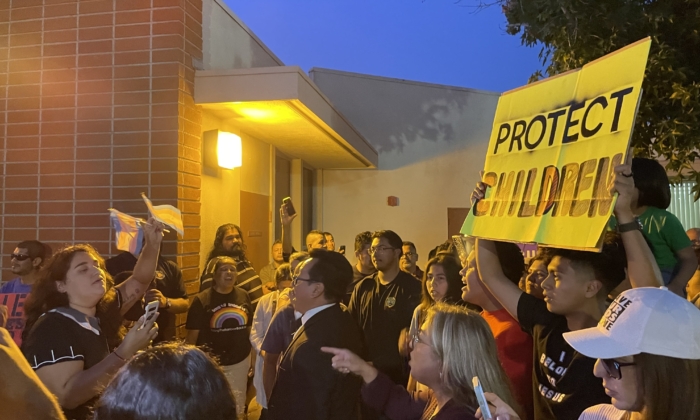

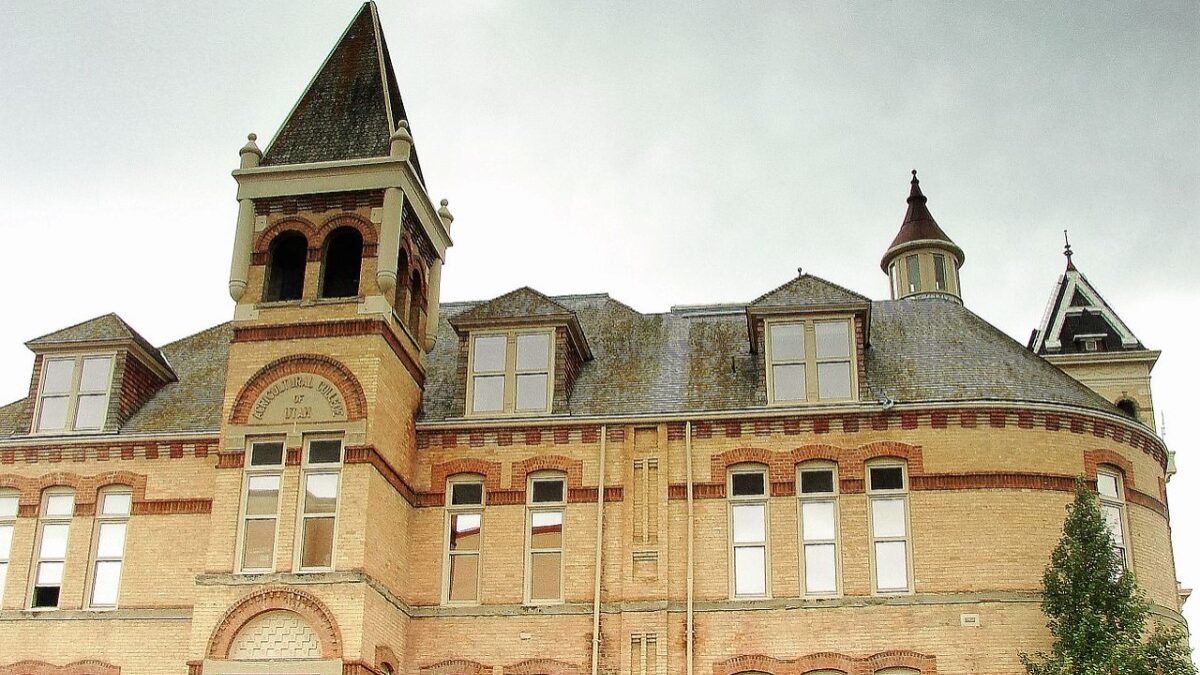
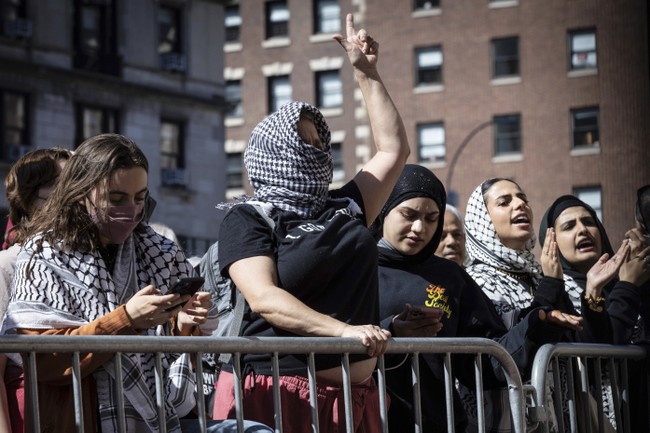
 English (US)
English (US)